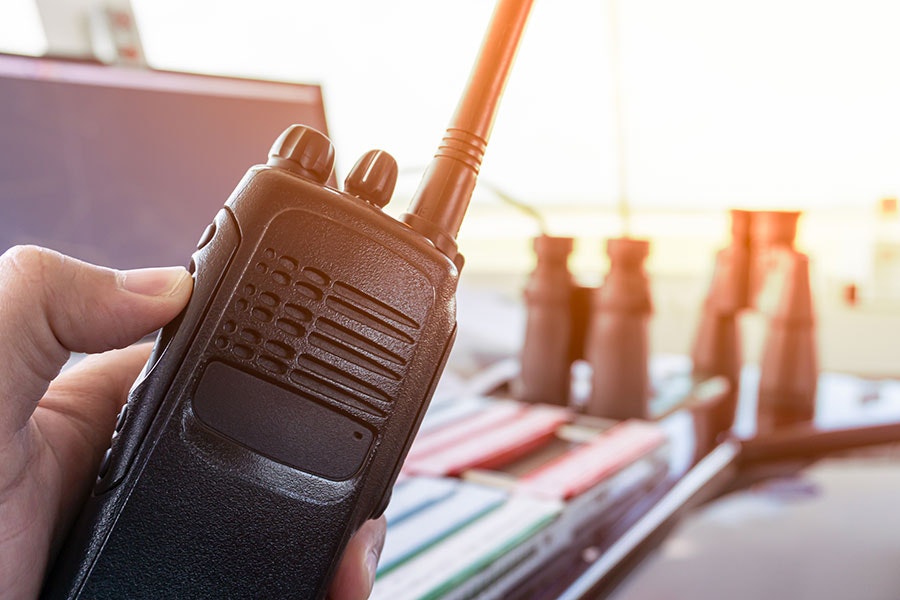The communication technology landscape has evolved tremendously in the recent decades with the introduction of smartphones and other smart devices. However, for instant and seamless communication on the go, digital walkie talkies continue to hold relevance for certain applications. With advancements in wearable technology, digital walkie talkies are also transforming into wearable formats.
Wearable Digital Walkie Talkies
Traditionally, digital walkie talkies have been handheld devices that allow push-to-talk communication. However, with technological progress in miniaturization and integration of communication capabilities into wearable formats, digital walkie talkies are also being introduced in wearable formats like watches, badges, and earpieces.
Some key manufacturers have launched digital walkie talkies integrated into smartwatch formats that allow users to stay connected while keeping their hands free. The watches have push button interfaces and long battery life to facilitate instant radio communication. They pair with smartphone apps for additional features and configuration. Such wearable walkie talkies are gaining popularity among field workers, first responders, and enterprises for improved workflow and safety.
Applications of Wearable Digital Walkie Talkies
Wearable digital walkie talkies are well-suited for applications that require instant interpersonal communication while allowing free movement of hands. Some major application areas include:
Construction Sites – Project managers, supervisors, and crew can stay connected through wearable walkie talkies for coordination and safety. The devices eliminate the need to hold communication gadgets.
Warehouses and Logistics – Employees involved in inventory management, loading/unloading, and transportation can use wearable walkie talkies clipped to their attire for effective collaboration throughout the facility and yards.
Public Venues – Security officials, staff, and volunteers at large public places like stadiums, convention centers, and festivals find wearable talkies useful in managing crowds and handling emergencies.
First Response Teams – Paramedics, firefighters, and police officers improving situational awareness and coordination through wearable digital walkie talkies during operations.
Industrial Facilities – Factory workers, plant technicians, and operators in manufacturing units use wearable walkie talkies to communicate over machine noise while both hands are engaged in work.
Benefits of Wearable Digital Walkie Talkies
The integration of digital walkie talkie capabilities into wearable formats introduces several benefits over traditional handheld devices:
– Hands-free Communication: Since the devices can be worn on the body like watches or badges, users have their hands free for other tasks while staying connected.
– Safety: Critical workers involved in manual labor, heavy machinery operation or emergency response can prioritize safety without holding communication devices.
– Convenience: Wearables eliminate the need to hold or carry walkie talkies, providing added convenience particularly for mobile job roles.
– Durability: Being ruggedized for wearability, these devices can withstand dirt, moisture, impacts, and vibrations better than handheld gadgets.
– Location Tracking: Advanced models support real-time location tracking of users via GPS/Bluetooth for enhanced visibility and management.
– Analytics: Usage data from wearables help organizations understand communication patterns and optimize resources.
– Customization: Interfaces are customized for different wearing formats and workflows like watches for quick access or badges that are discreet.
Opportunities and Challenges
The global for wearable walkie talkies is still in the growth phase presenting many opportunities for vendors. As technologies mature, we can expect:
– Tighter Integration: Future models may integrate with AR glasses for improved situational awareness and minimal form factor.
– Advanced Features: Over-the-air programming, push-to-talk voice commands, location sharing and sensors will enhance utility.
– Commercial Adoption: Increased awareness and competitive pricing will help gain adoption beyond early adopter industries.
On the flip side, high initial costs, interoperability challenges across vendor devices, and privacy concerns related to location tracking are some challenges holding back faster growth. Standardization efforts are needed to address such issues and fully realize the potential of wearable walkie talkies.
*Note:
- Source: Coherent Market Insights, Public sources, Desk research
2. We have leveraged AI tools to mine information and compile it




